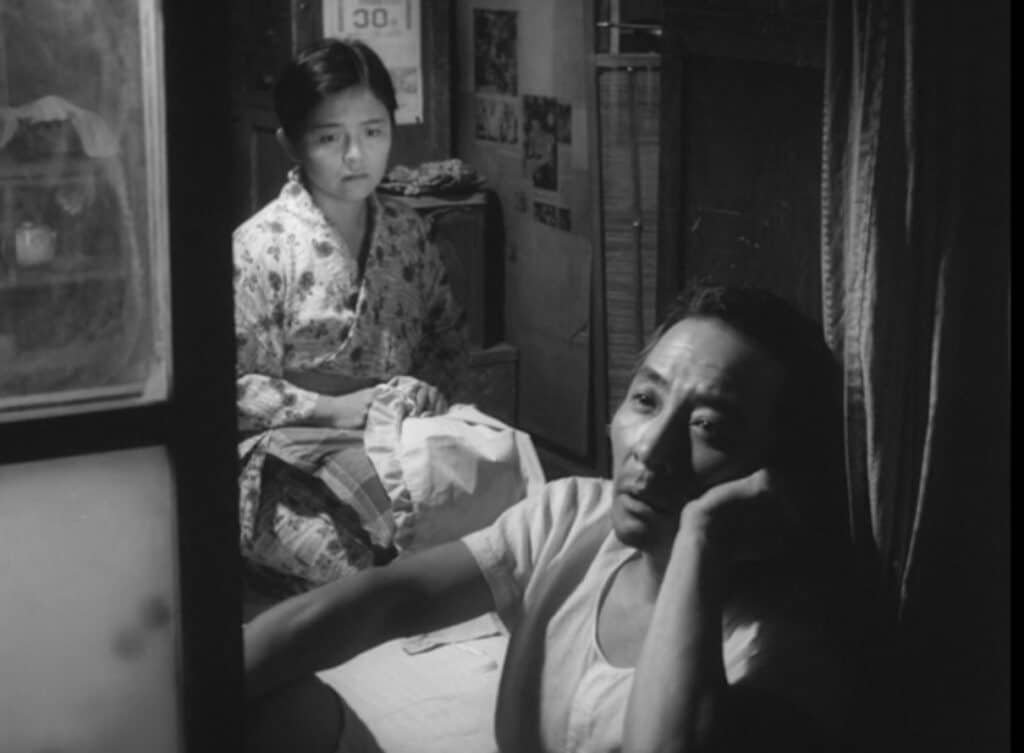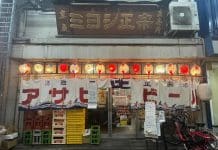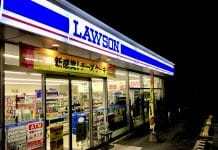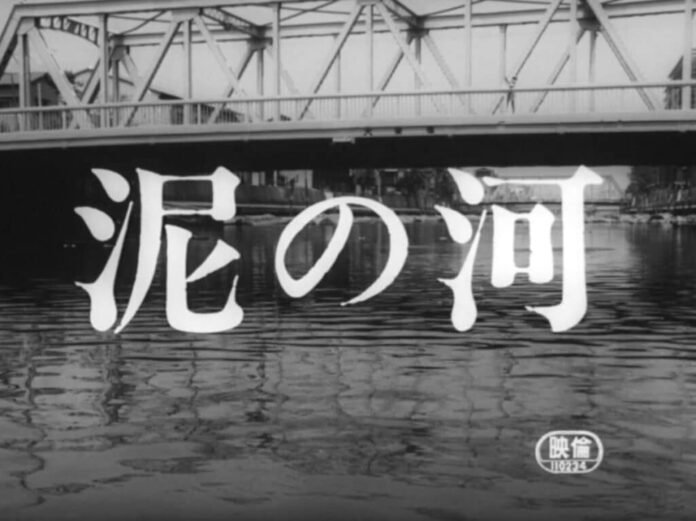
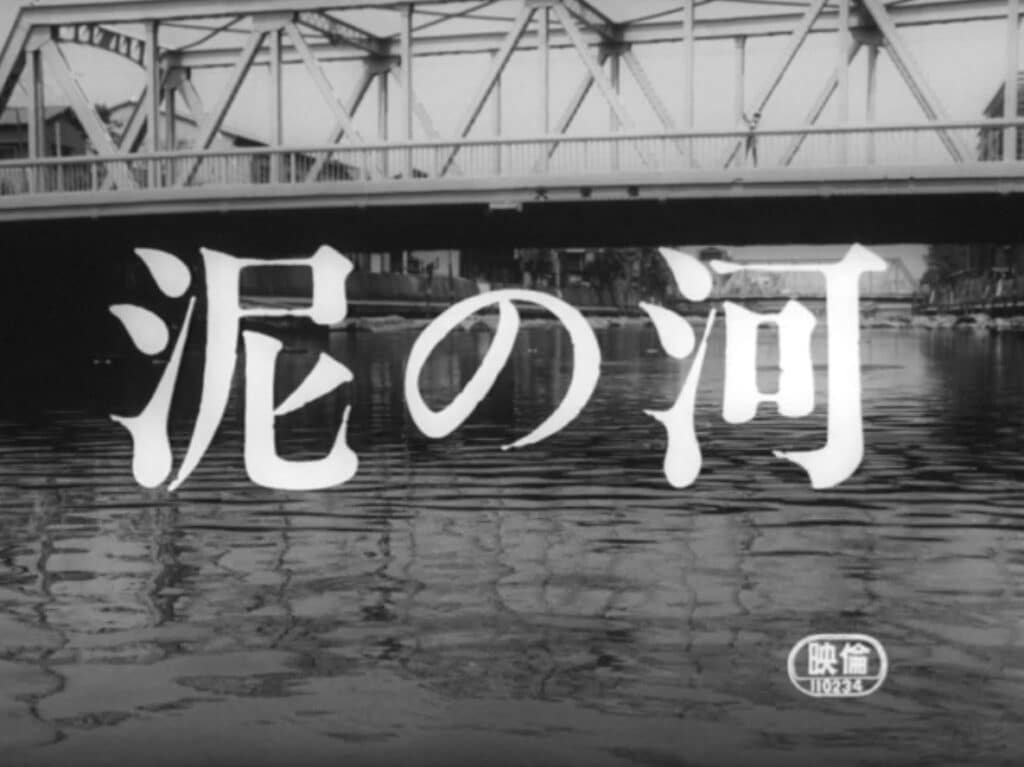
Nakanoshima is a river island located very much in the center of Osaka, right in the middle between Umeda and Namba. Bordered by the Dojima River to the north and the Tosabori River to the south, the narrow island, stretching about three kilometers from east to west, is today jam-packed with art museums and public service facilities occupying modern glass and marble structures. Osaka City Hall is located on the island.
If you head to the far west of the island, you will arrive at the confluence of the Dojima and Tosabori Rivers, from then on forming the Aji River. That area is quite different from the glamorous central urban parts of the island. Getting there, you pass through under the elevated Hanshin Expressway, you cross a barren plot of land called Nakanoshima West Park, you see large barges moored on the banks of the Tosabori River.
The far western edge of the island, known as the Nakanoshima Cutting Edge, is a tiny fenced-off spot of cracked concrete overgrown by weeds and strewn with garbage. Intrepid anglers find their way into the enclosure and throw out their fishing rods, the Osaka Wholesale Market is in clear sight further down the Aji River.
There are plenty of small bridges there, the Funatsu, the Hatatekura, the Dojima, the Minato, all connecting the northern and southern parts of the area via the island. You can walk them all and you should. They all offer great views.
Close to the Minato Bridge, you suddenly find yourself in front of a small monument. A memorial stone erected in 2011 in honor of a 1977 novel titled Doro no Kawa (Muddy River), written by Teru Miyamoto (born in 1947).
The first few sentences of the novel are engraved in the memorial stone: “The waters of the Dojima and the Tosabori Rivers converged to form the Aji River before emptying into a corner of Osaka Bay. Just upstream from where the two rivers merged they were spanned by a pair of bridges – the Funatsu and the Hatatekura. A streetcar line connected both bridges with the narrow strip of land between them…”
Miyamoto’s novel plays out 1955, towards the end but still not at the end of Japan’s post-war period. A boy, the son of a hardworking couple running a cheap noodle restaurant right on the bank of the Tosabori River becomes friends with the much poorer children living on a houseboat suddenly moored on the opposite side of the river…
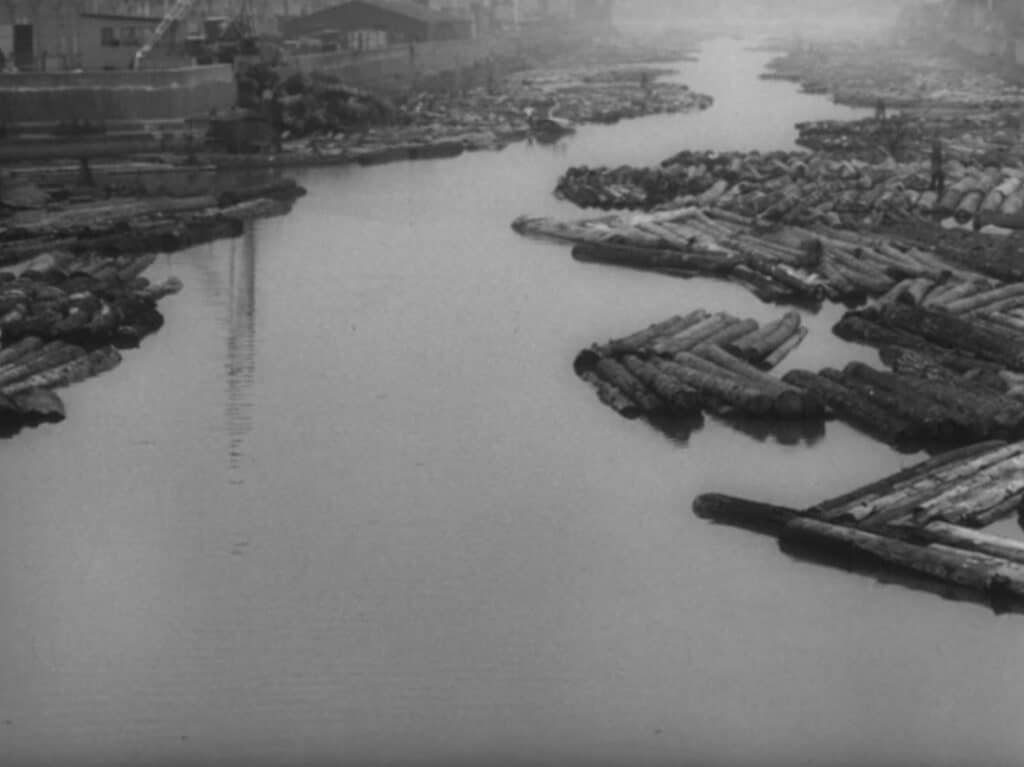
Table of Contents
Muddy River (Japan, 1981) 泥の河
Japanese director Kohei Oguri turned the novel into an independently financed and produced movie of the same title, Doro no Kawa (Muddy River), premiering in 1981.
Independent movies in Japan at the time meant largely noisy biker gang and punk rock flicks.
Oguri’s version of Minamoto’s novel however was as quiet and gripping as any of the classics of the black & white era. It clearly drew its inspirations from the gritty social realism of the Japanese New Wave era of the 1960s but avoided any of the exploitative tendencies and overtly political statements often associated with the Japanese New Wave.
The film opens with shots of rivers converging. Dirty, muddy rivers spawn by numerous bridges. Soon, the camera focusses on a particular shack housing an udon noodle shop. Being run by a married couple, Shinpei Itakura (Takahiro Tamura) and his wife Sadako (Yumiko Fujita), the noodle shop attracts mostly truck drivers and local workers. Though quite shabby from the outside, the noodles served at the restaurant seem to be quite tasty and popular.
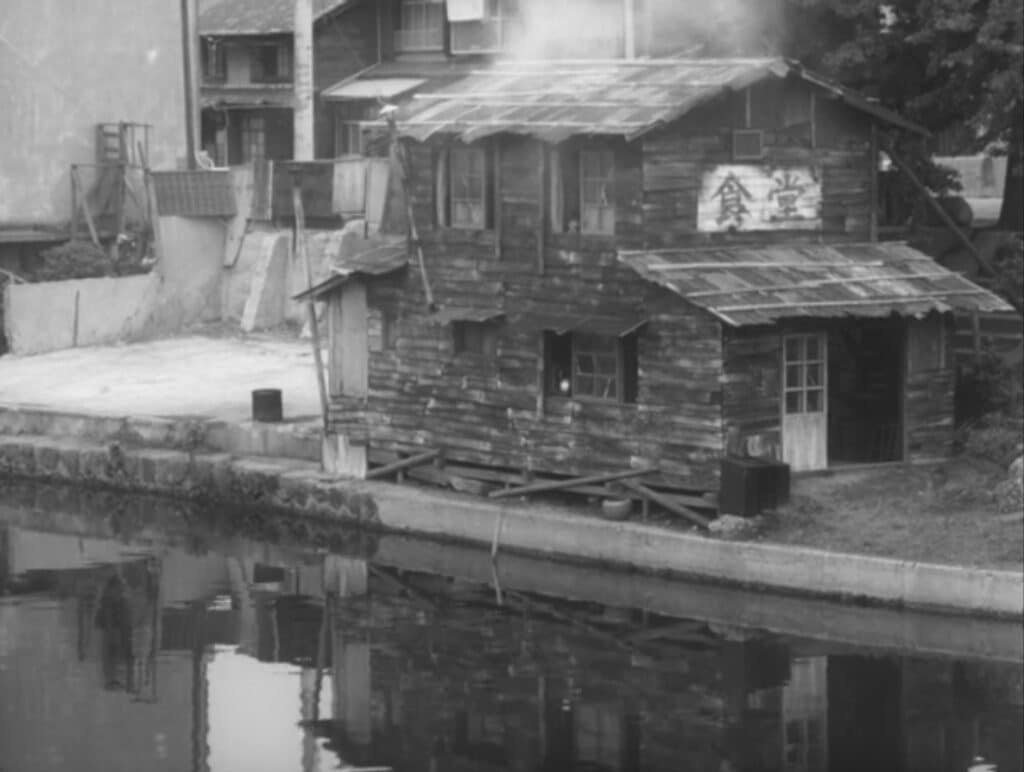
The couple has a son, nine-year-old Nobuo (Nobutaka Asahara). He’s a quiet but curious kid who likes to listen to the stories the customers tell. Stories that often reflect on the war but also espouse hope in a better future not too far away.
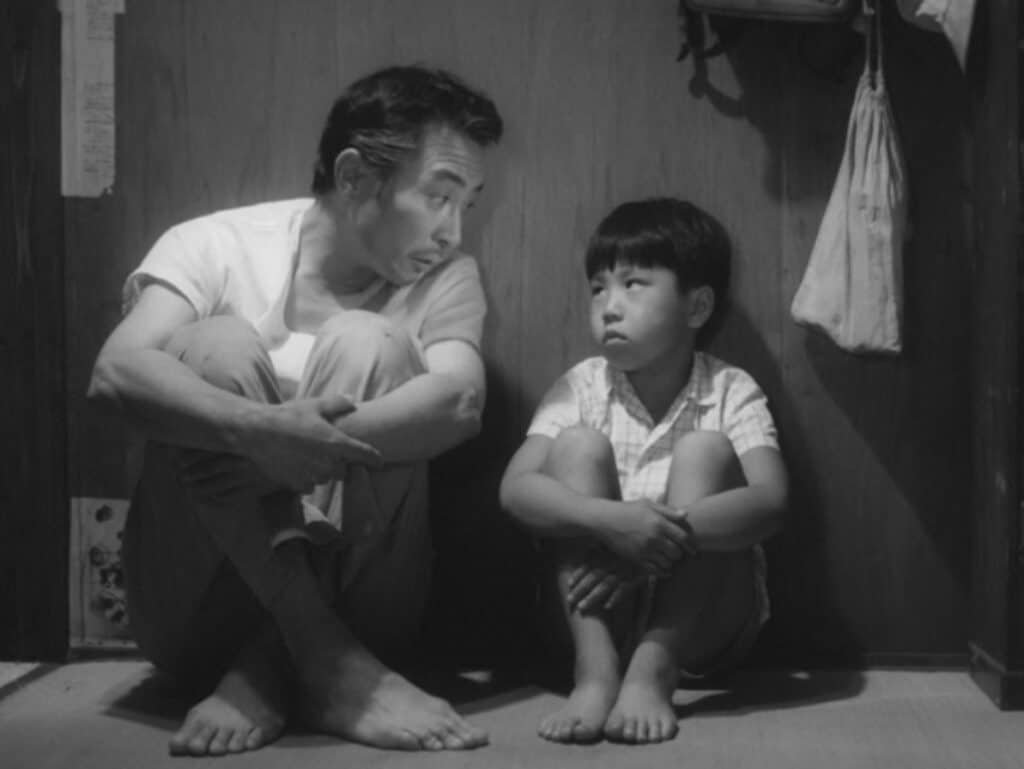
Soon after witnessing the tragic death of one of the noodle shop’s most treasured customers in an accident on Funatsu Bridge, Nobuo encounters a boy of his age on nearby Minato Bridge, spanning the Tosabori River.
The boy, Kiichi (Minoru Sakurai), points out a newly moored houseboat on the other side of the river, telling Nobuo that that is his home. He soon invites Nobuo over to the boat where Nobuo also meets Kiichi’s 11 year old sister Ginko (Makiko Shibata). Their mother seems to exist only as a voice behind a wooden wall, their father died at an accident at sea.
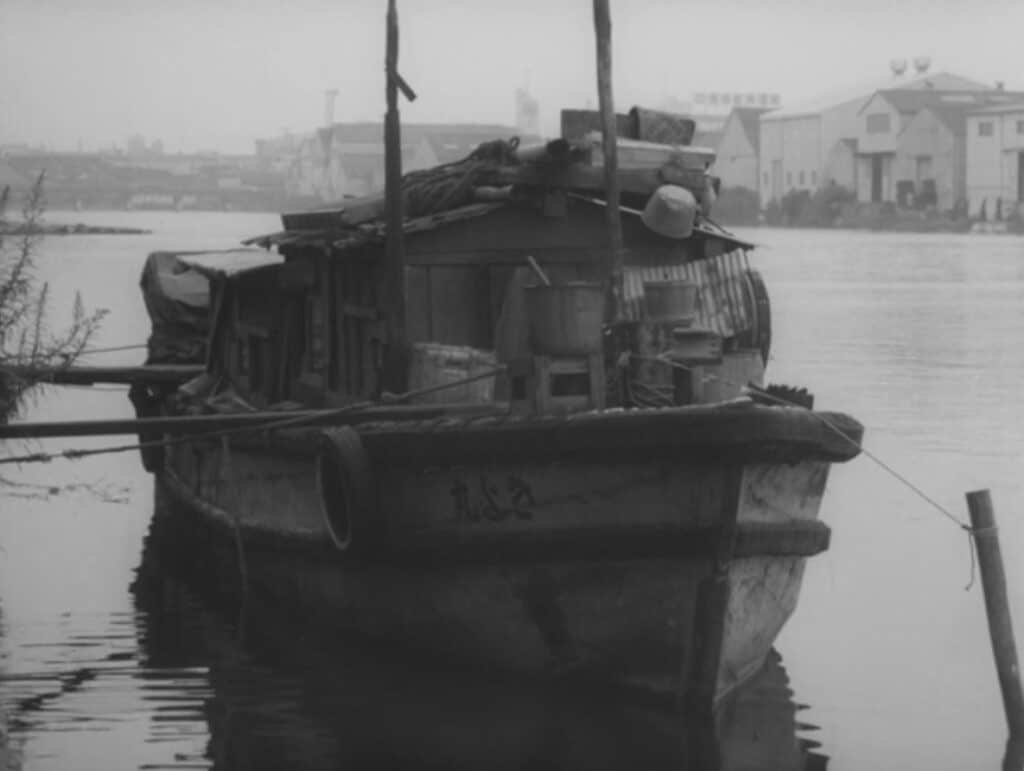
Nobuo’s family background is certainly not one of financial wealth in any way but the situation of the two siblings on the boat is one of sheer poverty. They don’t go to school, they scrape by at only the barest minimum. Still, both Kiichi and his sister Ginko seem always in a good mood, trying to make the best of their situation.
Soon, Nobuo and Kiichi become close friends. Nobuo invites Kiichi and Ginko over to his parents’ house where they receive a very welcoming reception. Bizarre situations arise, though. Asked to sing a song, Kiichi sings songs he had learned from his father, songs sung at the Japanese naval forces during the war. Nobuo’s father Shinpei had served in the naval forces as well and feels deeply moved while seriously wondering about the boy at the same time.
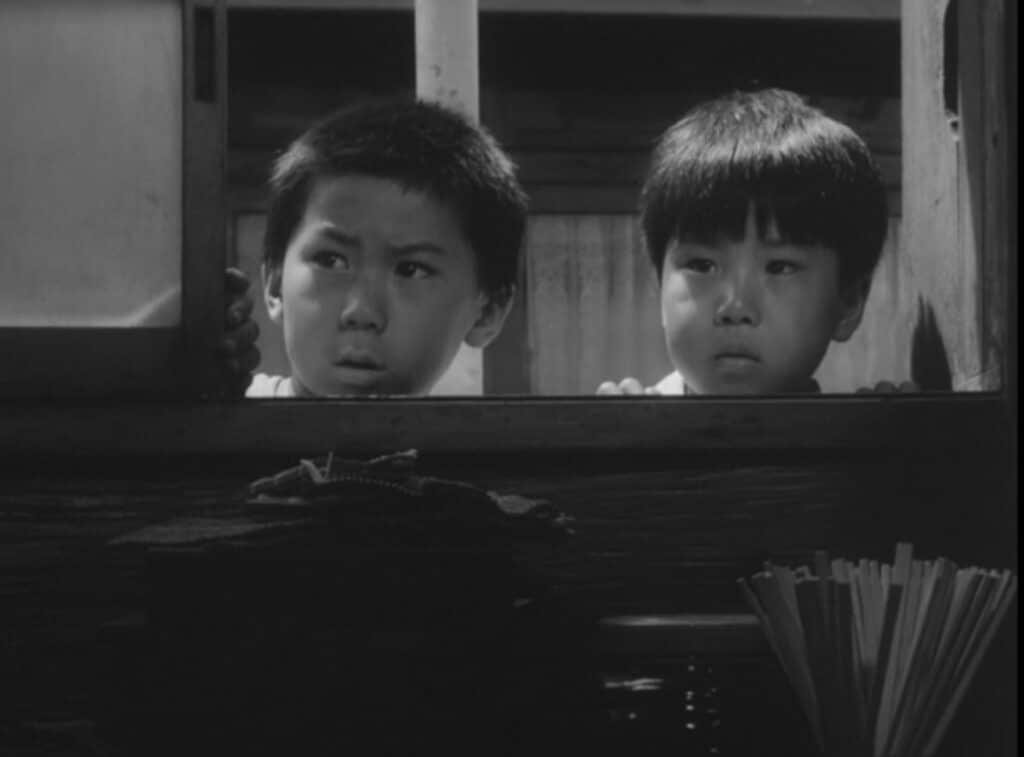
Though the war had been over for a decade, memories of the war are always present. Especially Shinpei, almost perpetually in a good mood, tends to suddenly turn silent, overwhelmed by memories he hesitates to share.
At one point, Nobuo does meet the mother of Kiichi and Ginko, Shoko (Mariko Kaga), living in a separate room on the boat. Adult viewers of the movie quickly understand that she works as a prostitute though Nobuo has of course no clue.
Summer arrives and with it the Tenjin Matsuri, one of Osaka’s biggest traditional festivals. Arranged by the Tenmangu Shrine in Kita Ward, the festival plays out not only at the shrine grounds but also involves large and quite picturesque ceremonial boat rides all around Nakanoshima.
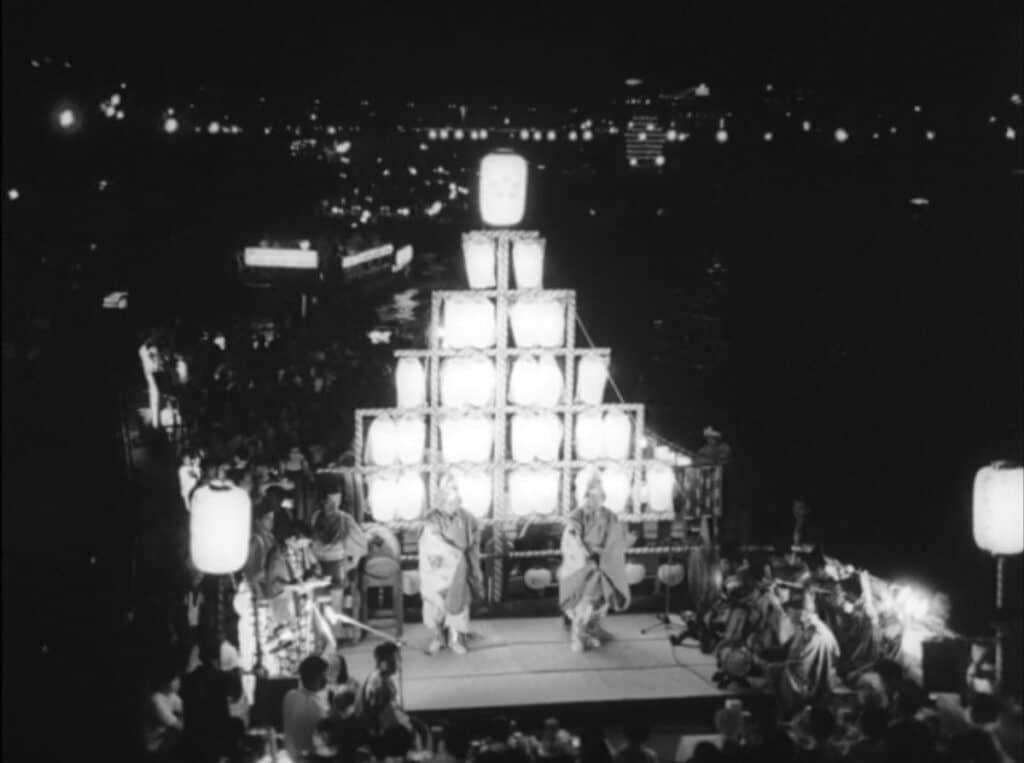
Nobuo and Kiichi receive 50 Yen each from Nobuo’s mother. For Kiichi, it is the first time he ever had own money in his hands. The two boys head for the festival… and the story takes quite a sad turn there, ending with Nobuo discovering the profession of Kiichi’s mother.
Shot in black & white, the film deeply reflects bitter-sweet memories of a Japan long gone at the time of its premiere. Though there are some dramatic scenes, for the most part the film is focused on the characters and their interaction with each other. Those interactions are chiseled out in psychological depth. Each scene has its special meaning, each shot could be printed out as a still picture.
Production Background
Kohei Oguri (born in 1945) was an experienced assistant director, he had previously never directed his own film, however. By what is said to be sheer luck, he was one day approached by producer Motoyasu Kimura who offered him to make his directorial debut, financed by Kimura.
Kimura was a wealthy man who ran his own iron works. At the same time, he was an unparalleled movie fanatic. At his factory, he had once built a replica Mitsubishi Zero fighter plane and used it to shoot his own war movie.
Kimura left the subject matter and style of the movie totally up to Kohei Oguri. Oguri accepted the offer and decided to try his hands at one of his favorite novels, Teru Miyamoto’s Muddy River.
The movie script is very close to the original novel. Most of the scenes and dialogues were directly lifted from the book.
The Government Statement
Kohei Oguri did however change the year the story is set in. From Minamoto’s original 1955, Oguri moved the story to 1956.
That doesn’t seem to make much of a difference on first glance but in fact, it made a big difference. On July 17th 1956, the Japanese government published an economic white paper stating that in 1955, Japan’s GDP (gross domestic product) exceeded pre-war levels for the first time since the end of the war.
Based on the data contained in the economic study, the Japanese government proudly declared: “The post-war period is over.” The statement, もはや戦後ではない in the original, was one of the most famous and most debated governmental statements in post-war Japanese history.

The data the statement was based on was certainly correct. Japan’s economy did grow impressively in the first half of the 1950s, to a good part because Japan produced large amounts of supplies for the American war effort in Korea.
To the still struggling majority of Japanese, however, those numbers meant nothing. They were still living in the shadows of the war. They were still poor, they were plagued by horrible memories. To them, the government declaration felt like a mockery if not an insult.
A newspaper featuring the government statement is prominently placed in the movie, summing up a lot of memories of the people who lived through the period. Particularly their resentment towards the ruling technocrats in Tokyo who seemed to care only about economic data and not about the situation people lived in.
Mariko Kaga
Mariko Kaga plays the mother of Kiichi and Ginko and is thus an an important character in the film. She does appear however only in two short sequences, otherwise she is just present as a voice behind a wall.
There is an easy explanation for this strange set-up: Mariko Kaga had contractual obligations for other movies and therefore hardly any time for Kohei Oguri’s ambitious independent project.
The scenes with her were therefore all shot within six hours at a rented studio. Her elaborated make-up must have taken half of the time.
Mariko Kaga looks absolutely stunning in the movie. Actually, much too beautiful for her role as a low-class prostitute.
The sadness she radiates, however, make her quite believable in her role.
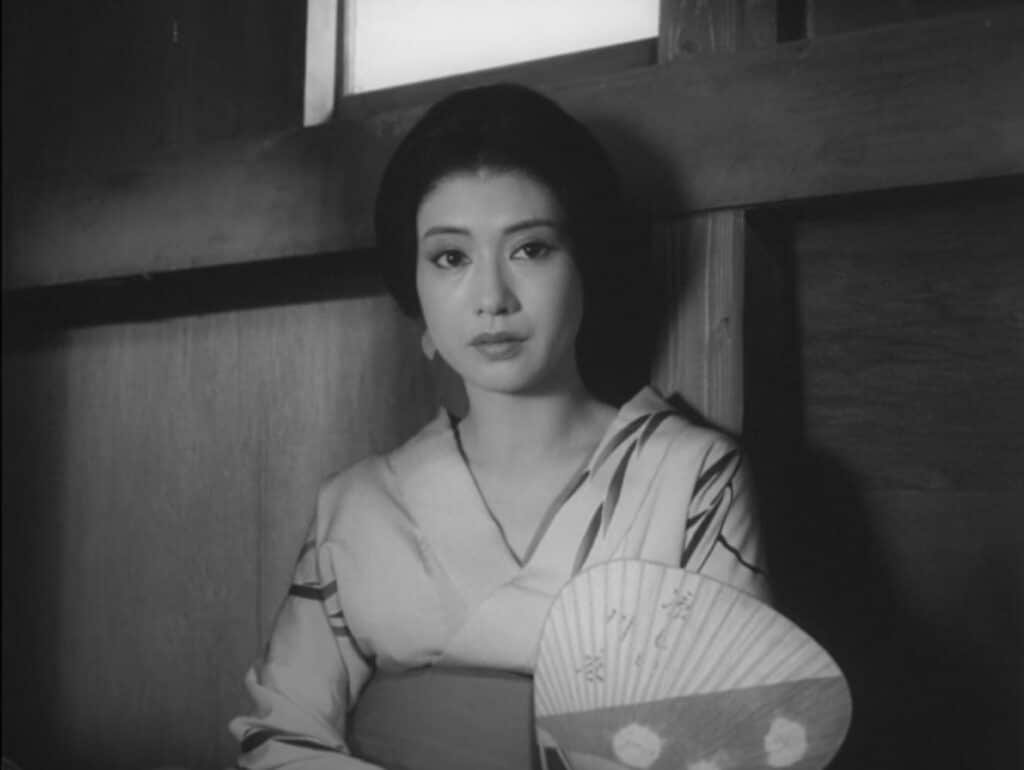
Osaka Locations
By the time the movie was to be filmed, the Hanshin Expressway had already been built right over the western edge of Nakanoshima, completely altering the appearance of the area. From a quiet backwater, the western edge of the island had become a noisy traffic transit zone.
To shoot the movie, Oguri needed to find a place resembling old Osaka elsewhere. He found it, by sheer luck, at the Nakagawa Canal in Nagoya. A canal that connects the center of Nagoya with the city’s port.
The canal and its vintage bridges provided a perfect stand-in for the original Osaka location of the novel.
The daytime Tenjin Festival boats were also filmed in Nagoya, most of the night scenes of the festival seem to be staged at a studio.
The scenes of the nightly Tenjin Festival boat parade however were quite obviously shot at the original festival in Osaka.
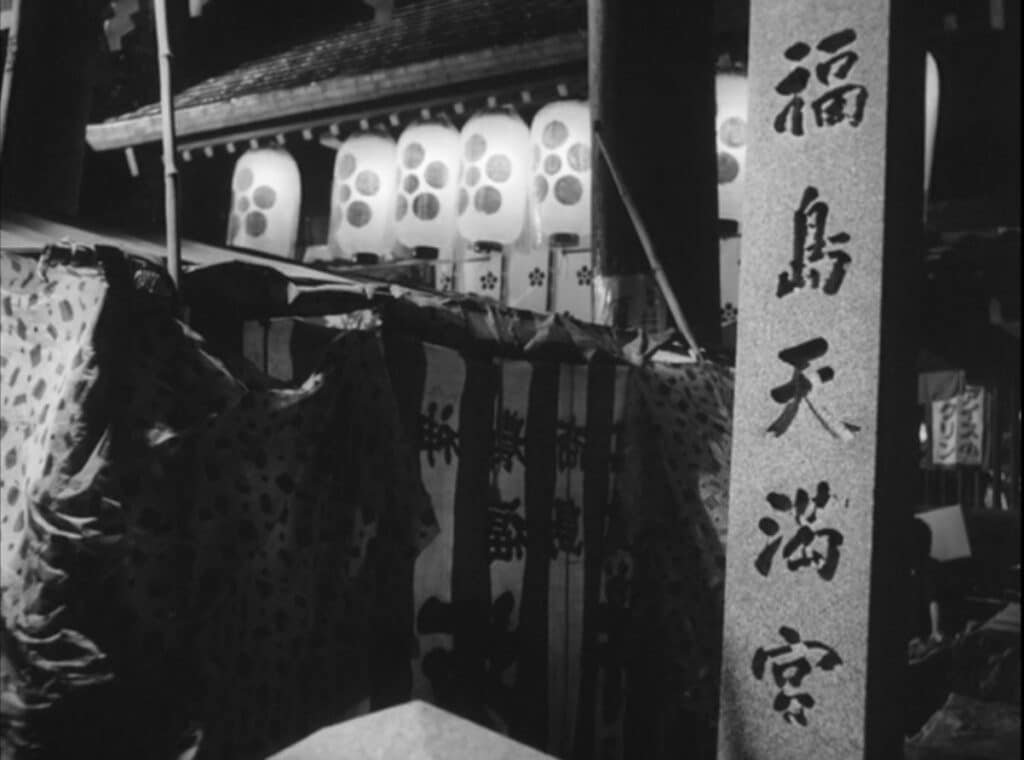
Reception of the Film
Motoyasu Kimura’s financing was certainly generous but in the end, Kohei Oguri still felt he needed additional funds. He did test screenings using a rough cut of the film in order to meet the conditions of the Agency for Cultural Affairs in Tokyo for further funding.
The funding was approved. Even more importantly, though, some influential international film festival agents attended the screenings. They signaled that they held the film in highest regards and that they would definitely book it into their respective festivals.
After a private screening, an executive of the distribution arm of Japan’s powerful Toei Studio was so impressed that he immediately decided to take on the Japanese distribution of the film.
The completed film was immediately considered a masterpiece rivaling the best of Akira Kurosawa. It was nominated in the Foreign Languages category of the Academy Awards, it won the Silver Prize at the Moscow Film Festival as well as numerous domestic prizes including the first prize in the prestigious Kinema Jumpo rewards.
Today, the film is still a favorite among aficionados of Japanese cinema. Unfortunately, subtitled versions appear to be very rare. Time for a new international release.
